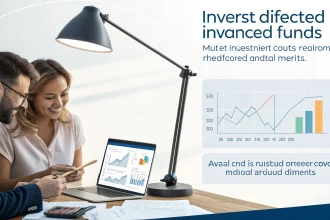The fiscal policy of President Donald Trump has come under increased examination as discussions about the federal deficit gain momentum in Washington. Ed Yardeni, President of Yardeni Research, recently shared his analysis on the financial implications of the administration’s economic approach during an appearance on the program ‘Making Money.’
As the United States continues to grapple with growing national debt, Yardeni’s insights arrive at a critical juncture for policymakers and market watchers alike. The conversation highlights the ongoing tension between stimulating economic growth and managing federal spending.
Fiscal Policy Implications
Yardeni, known for his economic forecasting expertise, evaluated the Trump administration’s fiscal strategies and their potential long-term effects on the American economy. The discussion centered on how tax cuts and government spending patterns have influenced deficit projections.
The Trump administration has consistently championed tax reductions as a means to boost economic activity. These tax policies, particularly the 2017 Tax Cuts and Jobs Act, represented one of the most significant overhauls of the U.S. tax code in decades.
“The administration’s approach to fiscal policy has focused on stimulating growth through tax reduction rather than addressing deficit concerns directly,” Yardeni noted during the program.
Deficit Concerns Growing
The federal deficit has expanded substantially in recent years, raising questions about fiscal sustainability. According to recent Treasury Department figures, the deficit has grown despite strong economic performance in several sectors.
Key factors contributing to the deficit debate include:
- Reduced tax revenue resulting from the 2017 tax cuts
- Increased government spending across multiple departments
- Rising costs for mandatory programs like Medicare and Social Security
- Interest payments on the existing national debt
Yardeni pointed out that while economic growth has been robust under the Trump administration, the corresponding increase in federal revenue has not kept pace with spending, leading to larger deficits than initially projected.
Market Reactions and Economic Impact
Financial markets have shown mixed reactions to the administration’s fiscal approach. On one hand, tax cuts and deregulation have contributed to strong stock market performance and business confidence. On the other, concerns about long-term debt sustainability have created uncertainty among some investors.
“The market has largely focused on short-term growth benefits while discounting potential long-term fiscal challenges,” Yardeni explained. “This creates a complicated picture for investors trying to plan for the future.”
The economic analyst also addressed how the Federal Reserve has responded to fiscal policy decisions, noting the complex relationship between monetary and fiscal policy in the current economic environment.
Political Dimensions
The deficit debate has taken on political dimensions as lawmakers from both parties stake out positions on government spending and taxation. Republicans have generally defended the tax cuts as necessary for economic growth, while Democrats have criticized them as fiscally irresponsible.
“What we’re seeing is a fundamental disagreement about economic priorities,” said Yardeni. “The question becomes whether growth-focused policies can generate enough activity to offset their initial cost to the Treasury.”
Congressional budget negotiations have increasingly centered on how to address the growing deficit while maintaining economic momentum, creating a challenging balancing act for lawmakers.
As the deficit debate heats up, economists like Yardeni will continue to play an important role in helping both policymakers and the public understand the complex trade-offs involved in fiscal decision-making. The coming months may prove critical in determining the long-term direction of American fiscal policy and its impact on economic growth and stability.









